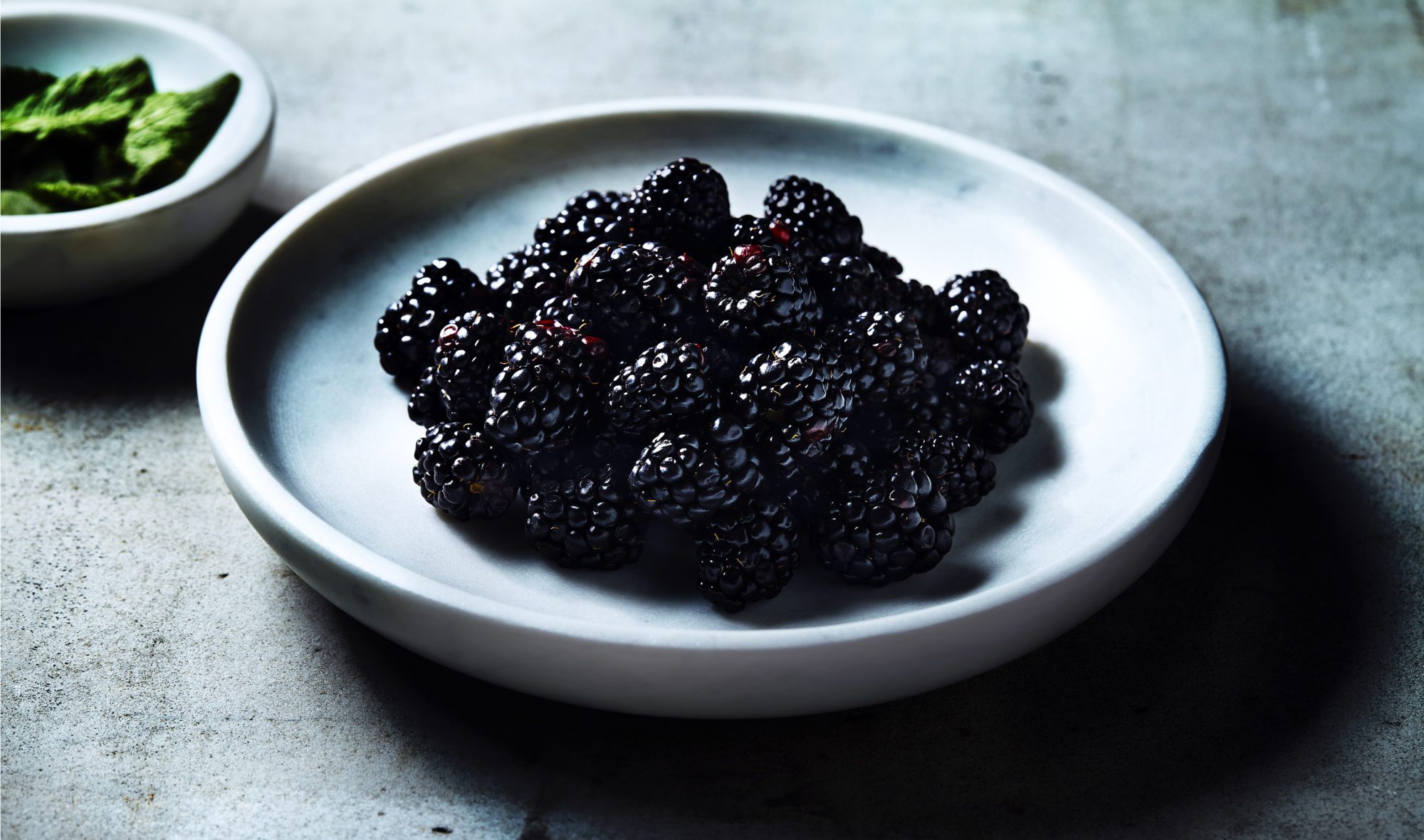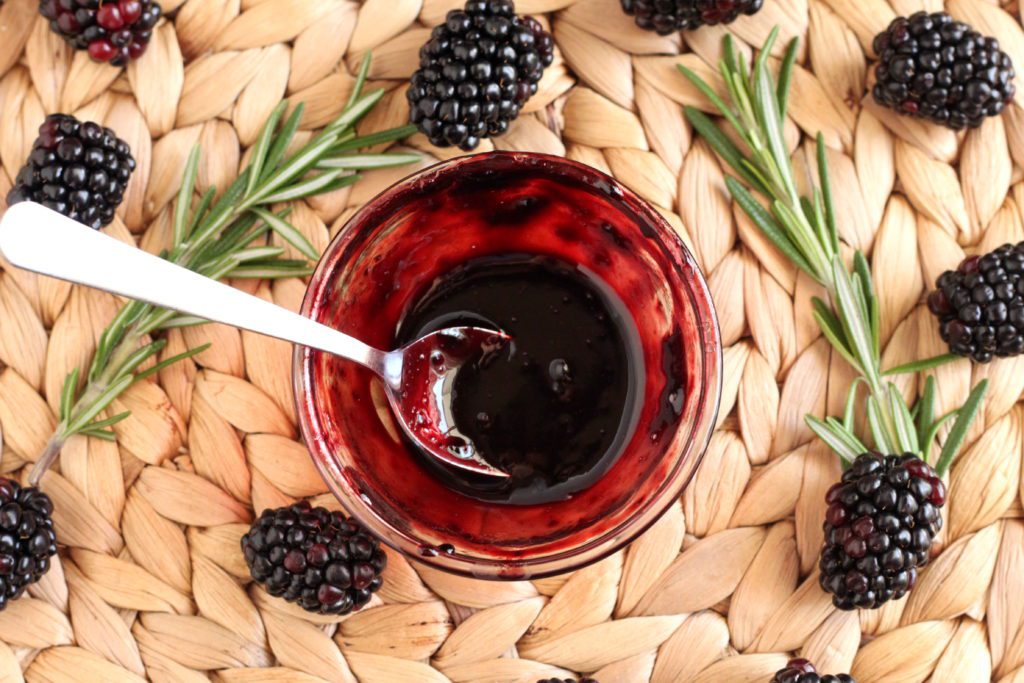
Join PN Level 2 for less than $9 USD/day! Affordable monthly payments now open.

The blackberry is a dark pigmented berry that belongs to the rose family. Blackberries are soft, luscious, punchy, and sweet. Blackberries grow wildly and abundantly across Europe and the Americas, but picking them is not without risks: Without proper protection, you will emerge from the tangled, aggressively-prickled blackberry bush torn and tattered, so wear long sleeves and boots when wild harvesting blackberries. Like many dark berries, blackberries are relatively low in sugar and high in nutrition, particularly fiber, vitamin C, vitamin K, and other health-benefiting antioxidants such as ellagic acid and anthocyanins. Blackberries are highly perishable, so whether you pick them or purchase them fresh, eat them quickly.
Before it was a smartphone favored by bankers and lawyers around the globe, it was a fruit.
The blackberry is a luscious, deeply pigmented berry that is part of the rose family.
Also part of the rose family is the blackberry’s close cousin, the raspberry. In fact, blackberries are sometimes confused with black raspberries, which in terms of both appearance and flavor, are quite similar. One simple way to tell the difference between a blackberry and a black raspberry is that, when picked, the core of the raspberry stays behind on the branch, yielding a hollow berry. When blackberries are picked, the (edible) core remains inside the berry.
Blackberry picking is notoriously perilous to skin and even denim; the sharp prickles on the tangled canes of the blackberry bush will tear both flesh and fabric. Prickle-free varieties have been developed through crossbreeding, although most wild varieties will bear some serious prickles, so wear proper protection.
Blackberries grow wildly and abundantly across Europe and in many parts of North America, but the world’s biggest commercial producer is Mexico.
The blackberry is a soft and luscious deeply pigmented midnight-purple berry.
The berry looks like it’s composed of tiny, glossy black beads, which fuse together in a domed shape. These delicate beads hold the punchy, sweet juice that give blackberries their flavor. The berry also contains many small, crunchy, astringent seeds as well as a soft white core called a torus, both of which are edible.
One cup of raw blackberries (about 144g) has 62 calories, 2g of protein, 0.7g of fat, 13.8g of carbohydrates, 7.6g of fiber, and 7.0g of sugar. Blackberries are a good source of vitamin C and vitamin K.
Additionally, like many dark pigmented berries, blackberries are very high in antioxidants. Notably, blackberries contain uniquely high amounts of protective polyphenol compounds such as ellagic acid and anthocyanins, the latter which is responsible for the berry’s dark color.
Whole blackberries are found in most grocery stores and fresh produce markets, either fresh or frozen.
Fresh blackberries are highly perishable, so examine the products carefully before purchasing. Fresh blackberries will usually come in plastic clamshells or baskets. Look for blackberries that appear dark and plump and intact. Pass over containers that have mushy or moldy blackberries.
Frozen blackberries are an excellent option and are much more reliable in terms of buying a fresh product. In this case, choose packages that contain only blackberries, with nothing else added.
As mentioned, fresh blackberries are highly perishable, so plan on eating your blackberries within a day or two of purchasing.
If you don’t plan on eating your blackberries as soon as you get home, follow these tips to prolong their freshness:
Open your container of blackberries and pick through to remove any mushy or moldy berries, as these will contaminate the rest of the batch. Place the unwashed “good” berries back into their container or into a new container. Spreading the berries out will help preserve them and prevent molding or spoilage. Place these berries in the fridge and eat within a day or two.
Alternatively, you can also freeze your berries after picking through them. In this case, rinse them gently with water and pat them dry with a clean kitchen towel. Then, spread them out on a baking tray and place them in the freezer. (Spreading them out ensures that the berries freeze separately; freezing them in a pile will mean they will freeze clumped together, making it hard to portion out the berries later.) Once they are frozen, transfer them to a resealable bag, where they may remain frozen for up to a year.
Fresh blackberries, with a thorough, yet gentle rinse, are ready to be eaten straight from the container. They are also delicious topped over yogurt, cooked oats, or salads, or blended into smoothies. Frozen blackberries can also be blended into smoothies, or thawed out to be used in baked goods or other recipes.

This sauce has the sweetness of blackberries and maple syrup contrasted with the bite of balsamic vinegar and lemon and the savory taste of rosemary and thyme. This sauce has a unique blend of flavors that will excite all of your taste buds!
Prep Time: 5 minutes Cook Time: 20 minutes Yield: 1/2 cup
In a pan, sauté the shallots in 1 tsp of olive oil until soft.
Next, add all ingredients, including the sautéed shallots, to a small pot and bring to a boil. Reduce to medium heat and cover with a lid. Let cook for 10 minutes. Remove the lid and stir ingredients, mashing down the blackberries to combine together. The sauce will be quite lumpy.
Push the sauce gently through a sieve and try to extract as much of the juice as you can to return to the small pot. Once you have all of the juice extracted discard the solid portion of the sauce – and bring the juice to a simmer and stir / whisk continuously until the sauce resembles a syrupy texture (e.g. when you pour it off a spoon it looks like maple syrup, not water).
Enjoy by brushing the glaze onto chicken in the last minute of grilling – or brush onto chicken after it’s been grilled.
Note: If storing the glaze in the fridge for use another day – gradually add water to improve the consistency again if it thickens up.
Precision Nutrition’s Encyclopedia of Food expands every single month as we highlight new foods and showcase beautiful food photography. If you’d like to stay up to date, simply click this link. From there, we’ll send you a FREE copy of our recipe book. We’ll also let you know when new and delicious foods are added to the site.
The blackberry is a dark pigmented berry that belongs to the rose family. Blackberries are soft, luscious, punchy, and sweet. Blackberries grow wildly and abundantly across Europe and the Americas, but picking them is not without risks: Without proper protection, you will emerge from the tangled, aggressively-prickled blackberry bush torn and tattered, so wear long sleeves and boots when wild harvesting blackberries. Like many dark berries, blackberries are relatively low in sugar and high in nutrition, particularly fiber, vitamin C, vitamin K, and other health-benefiting antioxidants such as ellagic acid and anthocyanins. Blackberries are highly perishable, so whether you pick them or purchase them fresh, eat them quickly.